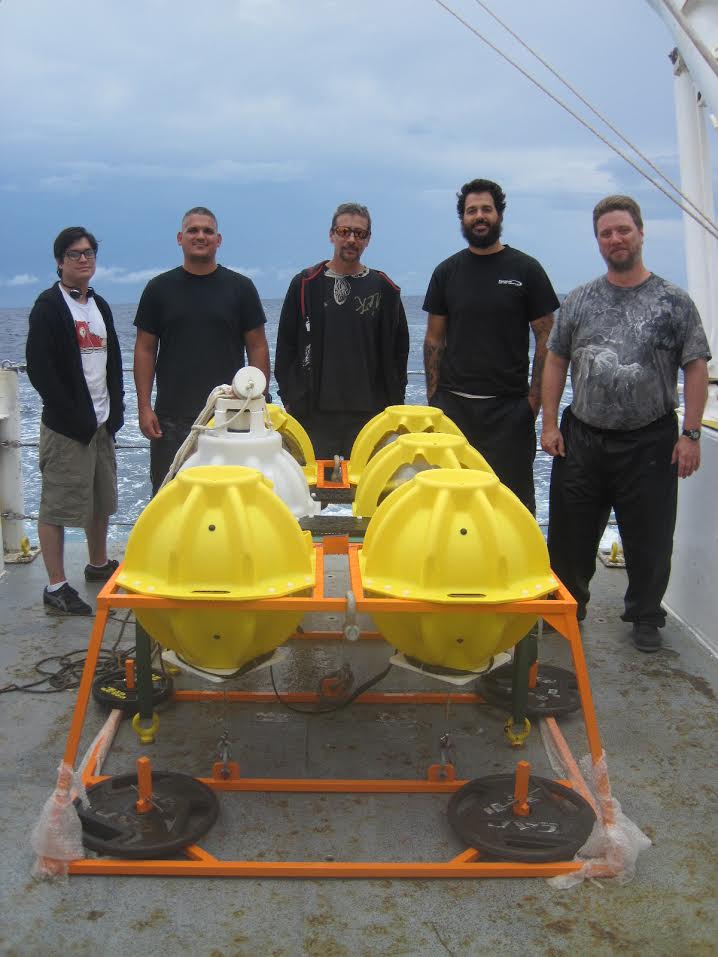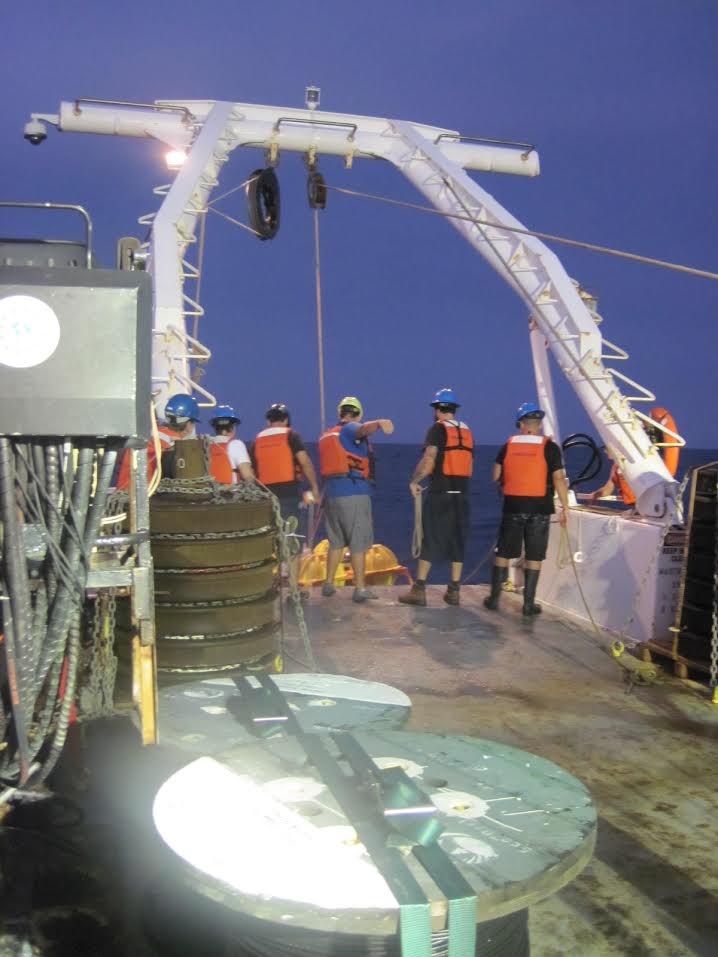Exciting early success from ABIISS deep ocean test
One of the major challenges facing the oceanographic community is the difficulty in maintaining long-term ocean measurement systems in an era of reduced research vessel availability.On November 6, 2015, personnel from the Physical Oceanography Division celebrated a great success in one method to address this challenge when the first ‘data pod’ from the “Adaptable Bottom Instrument Information Shuttle System (ABIISS)” surfaced and successfully transmitted data. The ABIISS package is designed to inexpensively move data from bottom-mounted oceanographic measurement systems up to the surface and back to land via satellite. Presently data from most subsurface moored instruments must be collected via research vessels – stretching NOAA resources. But ABIISS aims to reduce these ship expenses by allowing longer deployments of the moored instruments while simultaneously requiring fewer visits by research ships, and while still getting the critical climate measurements back to land promptly. ABIISS has been under development at AOML for several years with funding from the OAR Assistant Administrators Discretionary Fund, from the Climate Program Office, and from AOML. The present prototype has been deployed in 4500+ meters of water – representing for the first time a test in true deep ocean conditions. The ABIISS system has been mated to a pressure-equipped Inverted Echo Sounder (PIES) for an 18-month deployment alongside one of the existing PIESmoorings that are part of the long-term AOML “Western Boundary Time Series” project. Moving forward, over the next roughly 16 months the ABIISS system will release three more expendable ‘data pods’ that will float up to the surface at preprogrammed times and transmit the data from the PIES back to land via the Iridium satellite network. After the final data pod has been released, the ABIISS control system and the mated PIES will be recovered in early 2017 for future use. The ABIISS development at AOML is being led by Ulises Rivero, together with Pedro Pena, Grant Rawson, Andy Stefanick, and Tom Sevilla from the PhOD Instrumentation Group. Chris Meinen and Silvia Garzoli have also helped with science and development ideas.

